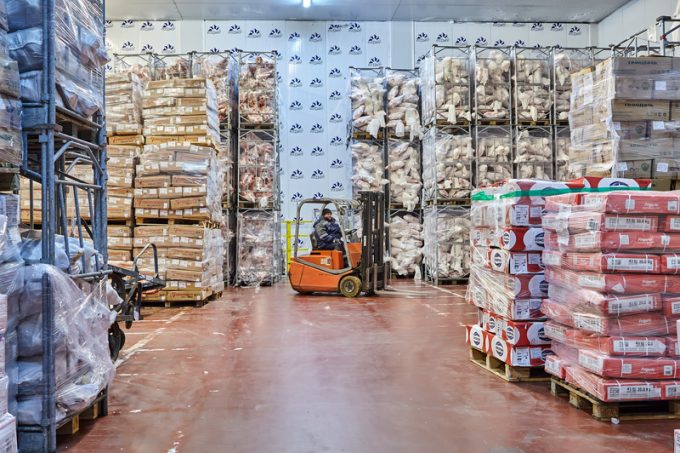A cold chain sustainability challenge as Lineage Logistics eyes IPO
According to some reports, Lineage Logistics is gearing up for a $30bn IPO this year. This ...
TFII: SOLID AS USUALMAERSK: WEAKENINGF: FALLING OFF A CLIFFAAPL: 'BOTTLENECK IN MAINLAND CHINA'AAPL: CHINA TRENDSDHL: GROWTH CAPEXR: ANOTHER SOLID DELIVERYMFT: HERE COMES THE FALLDSV: LOOK AT SCHENKER PERFORMANCEUPS: A WAVE OF DOWNGRADES DSV: BARGAIN BINKNX: EARNINGS OUTODFL: RISING AND FALLING AND THEN RISING
TFII: SOLID AS USUALMAERSK: WEAKENINGF: FALLING OFF A CLIFFAAPL: 'BOTTLENECK IN MAINLAND CHINA'AAPL: CHINA TRENDSDHL: GROWTH CAPEXR: ANOTHER SOLID DELIVERYMFT: HERE COMES THE FALLDSV: LOOK AT SCHENKER PERFORMANCEUPS: A WAVE OF DOWNGRADES DSV: BARGAIN BINKNX: EARNINGS OUTODFL: RISING AND FALLING AND THEN RISING

Global cool chains are poised to get faster and shorter as e-commerce rapidly comes to the fore in the Covid-19 era.
A survey published by the Global Cold Chain Alliance (GCCA) finds the pandemic has turbo-charged online sales and direct deliveries to consumers of chilled or frozen food, accelerating flows.
At the same time, however, scepticism about global supply chains and business opportunities is on the rise.
Even though more than half of the respondents (54%) reported lower revenues in the first two quarters of this year than ilast, and costs have risen, optimism among them is high, the survey reveals.
The majority of those surveyed (57%) think the pandemic will accelerate the growth rate of the cold chain industry, while only 6% expect it to have a negative impact on growth.
E-commerce is seen at the forefront of this acceleration: nearly three-quarters of those surveyed (74%) expect a further increase in their online business and direct delivery of chilled or frozen product to consumers.
This goes hand-in-hand with expectations of new business opportunities, with over a quarter (27%) of those polled saying they see a chance to expand the range of their value-added services.
The pandemic has pushed up costs – 80% report increases – however, these would seem to be relatively modest, at least as far as the storage of temperature-controlled products is concerned. The GCCA’s Cold Chain Index for the second quarter shows a rise of 2.06% in refrigerated warehousing expenses.
At the same time, respondents feel a need to beef-up their technology to get a better grip on visibility, and anticipate a growing role for artificial intelligence in their supply chain management.
Countering the optimism about opportunities in e-commerce is the perception of the global market. Almost three-quarters of the respondents (73%) expect global trade opportunities to either decrease or stay flat, relative to pre-Covid expectations, the GCCA study reports.
Moreover, extended supply chains are viewed as vulnerable, with more than half the respondents pointing to supply chain disruption as their biggest challenge. A recent illustration of supply chain disruption has come from Vietnam, where fruit exporters were unable to ship to the US for several weeks, as the pandemic had severely reduced the number of officials available to inspect the safety of their shipments.
The pandemic has also shaken up processes: as companies grappled with new safety protocols and allowed more employees to work from home, many have come to realise that not everybody needs to be at the workplace.
Prior to Covid-19, on average, 4.5% of employees in the sector worked from home. This jumped to 19.8% after lockdowns were imposed. Now, 53% of the survey respondents expect the number of employees working from home to increaseeven further.
The GCCA estimates that, on average, about 10.6% of employees in the sector will be working from home going forward.
Comment on this article